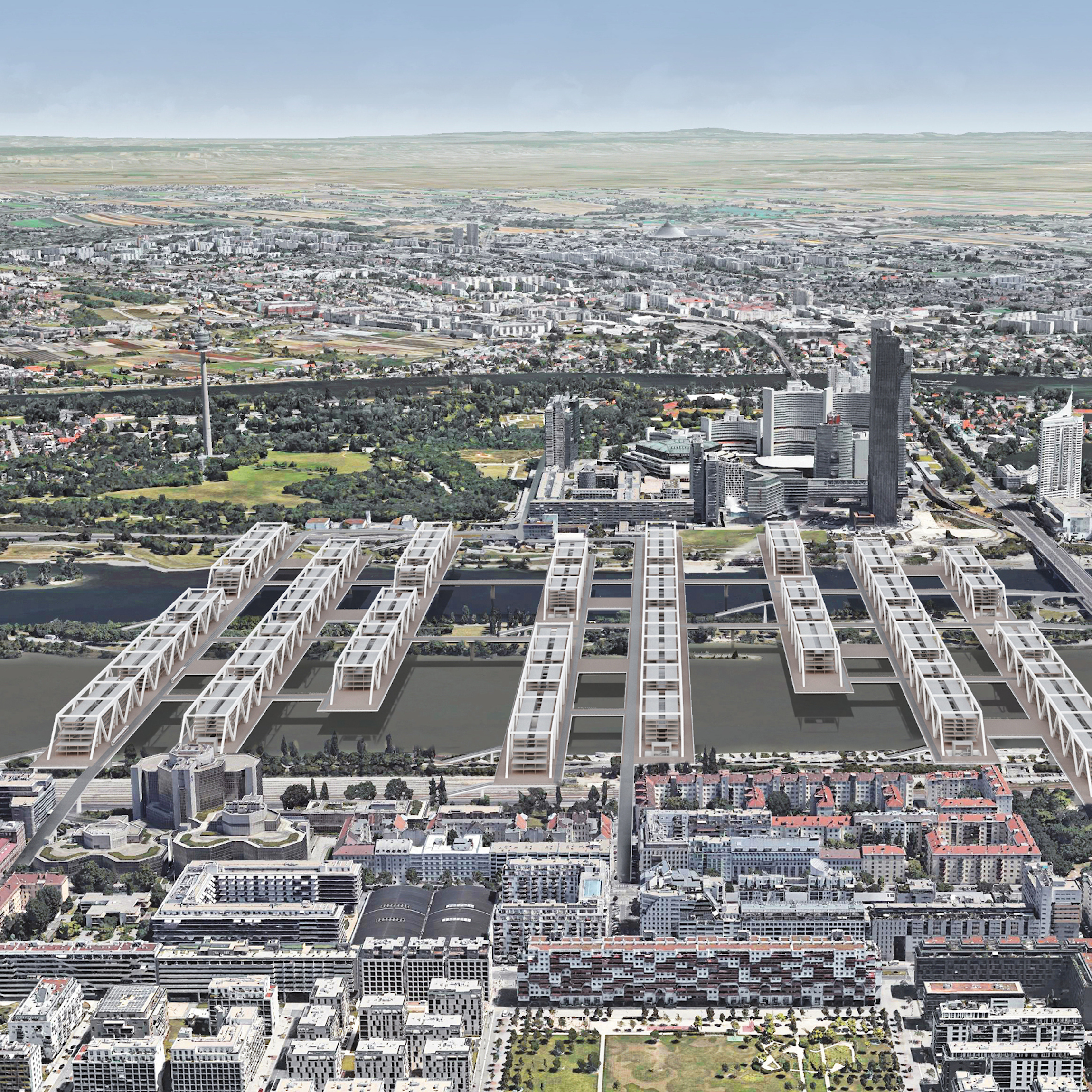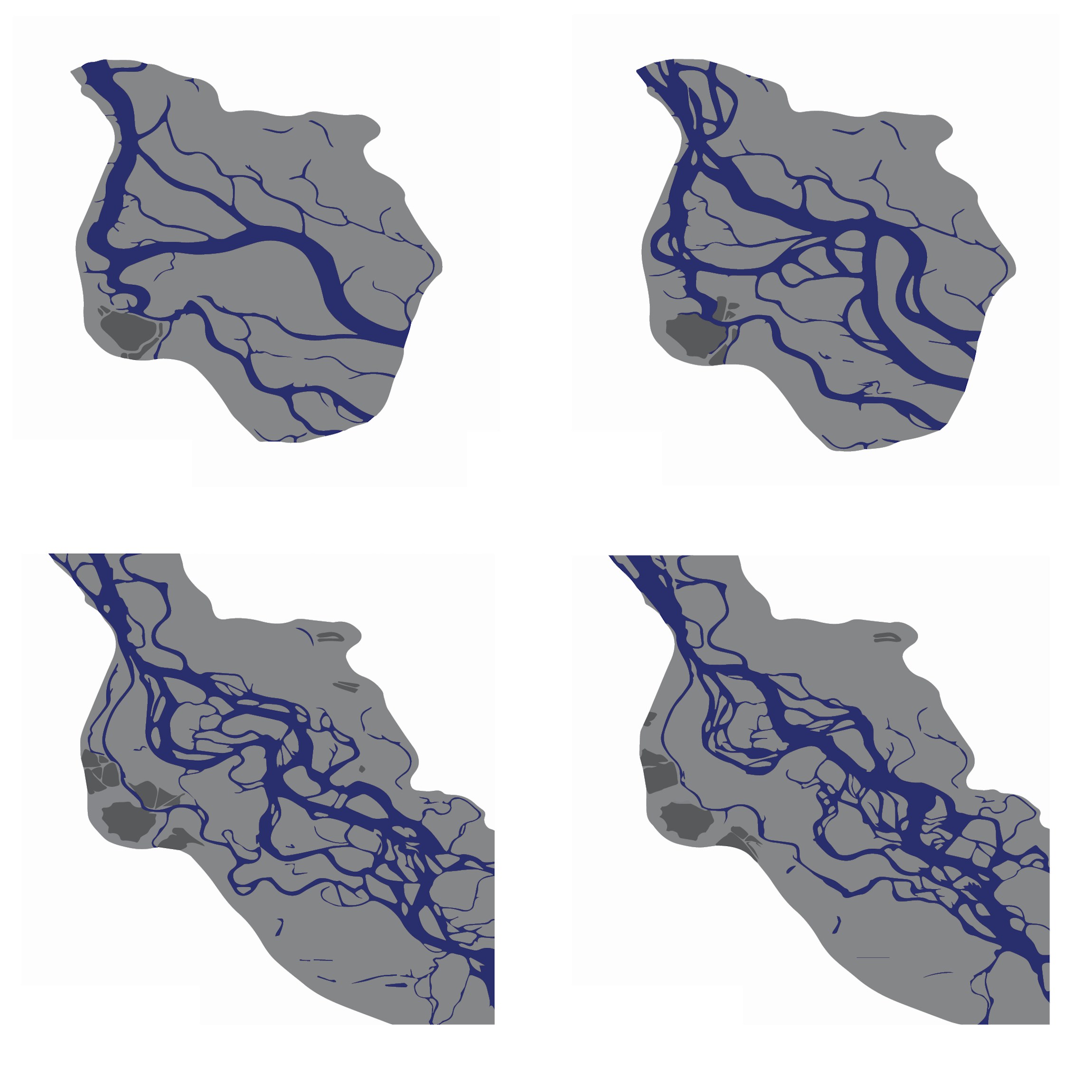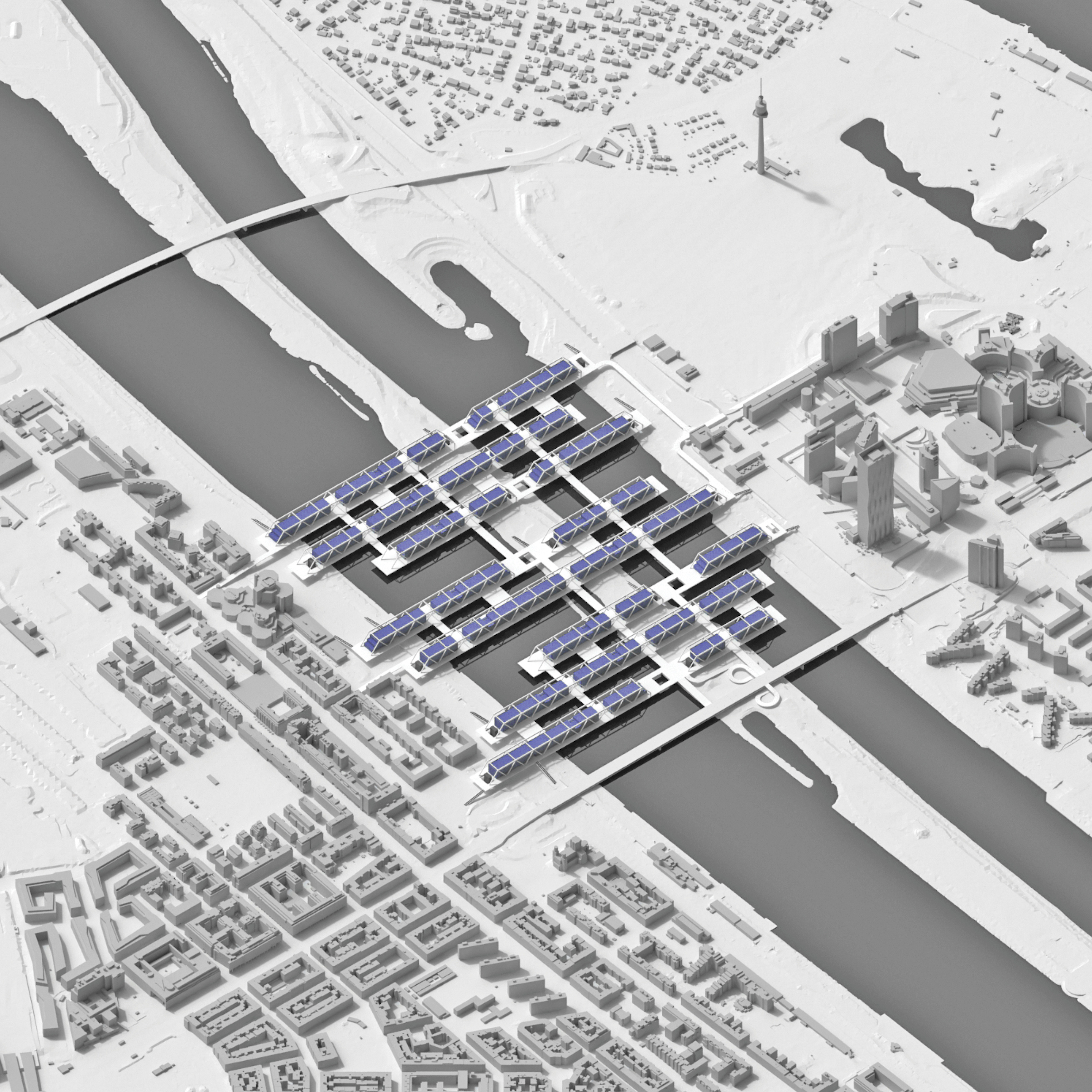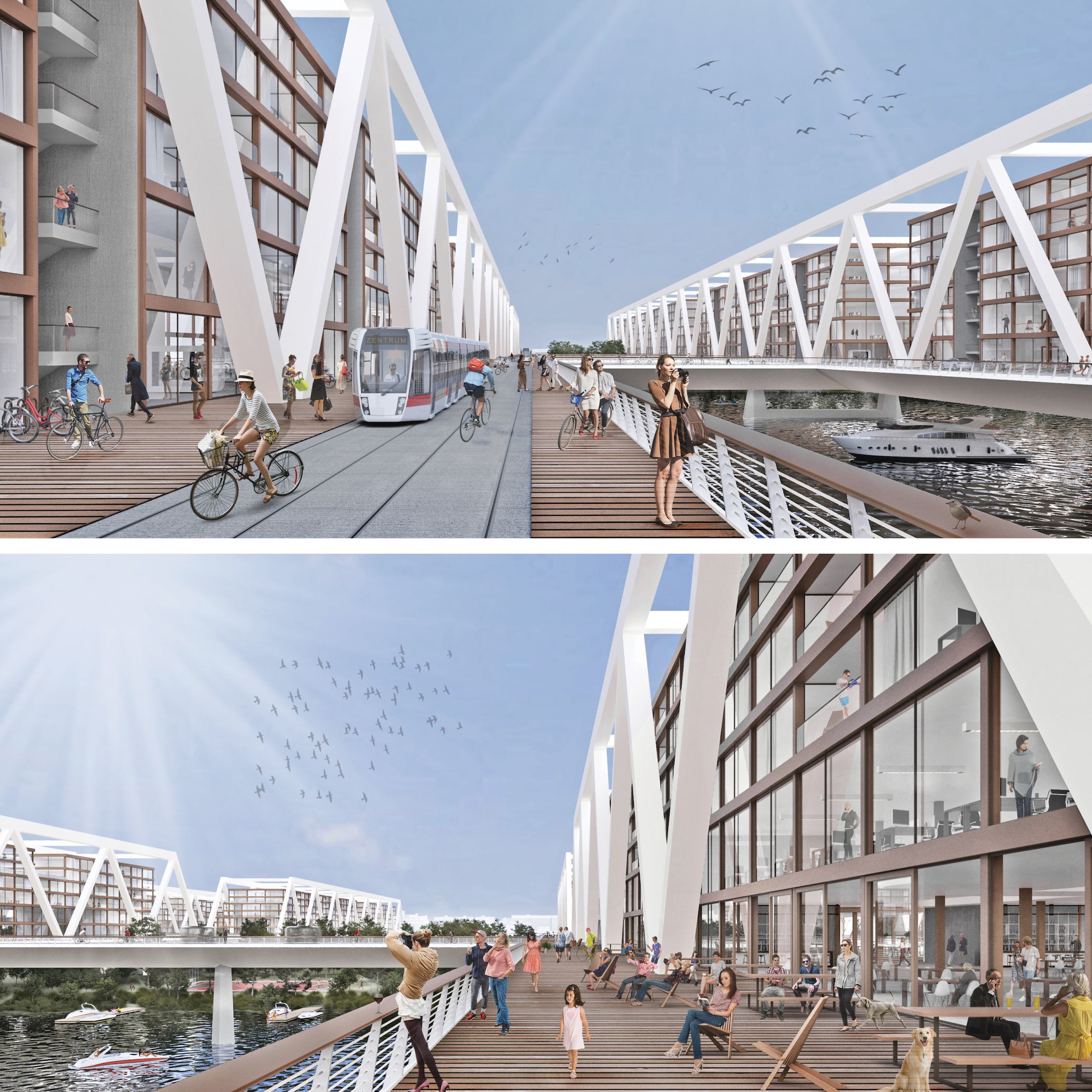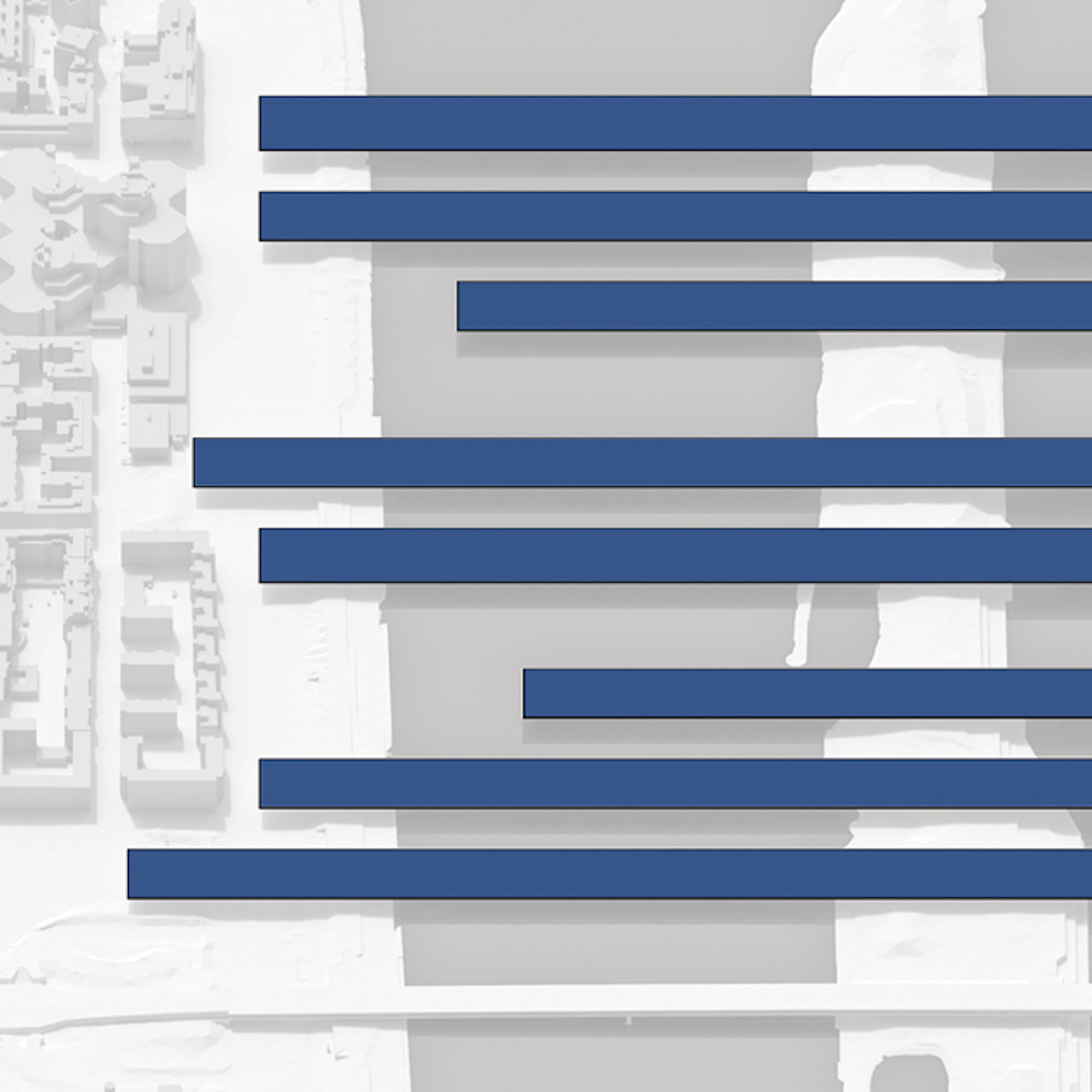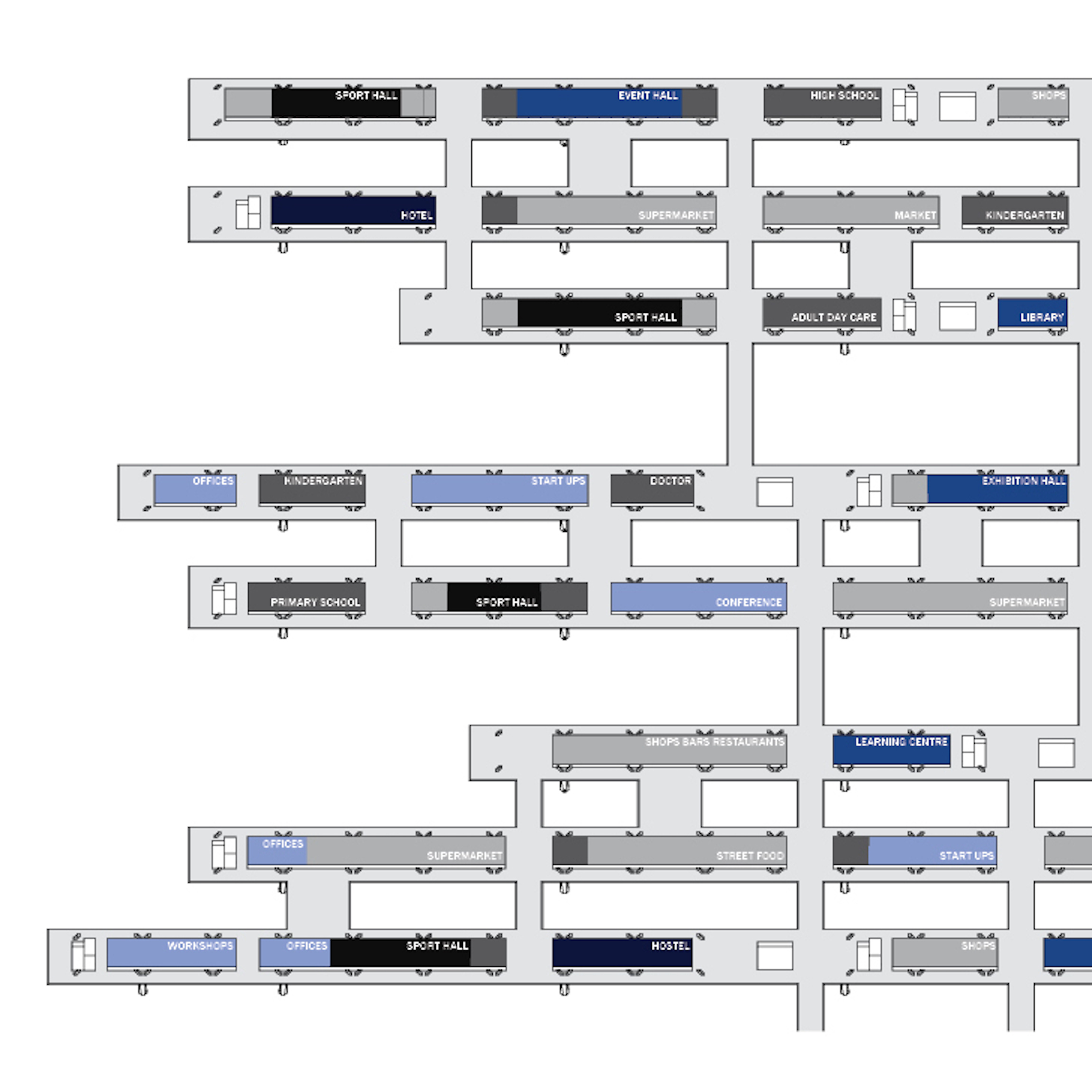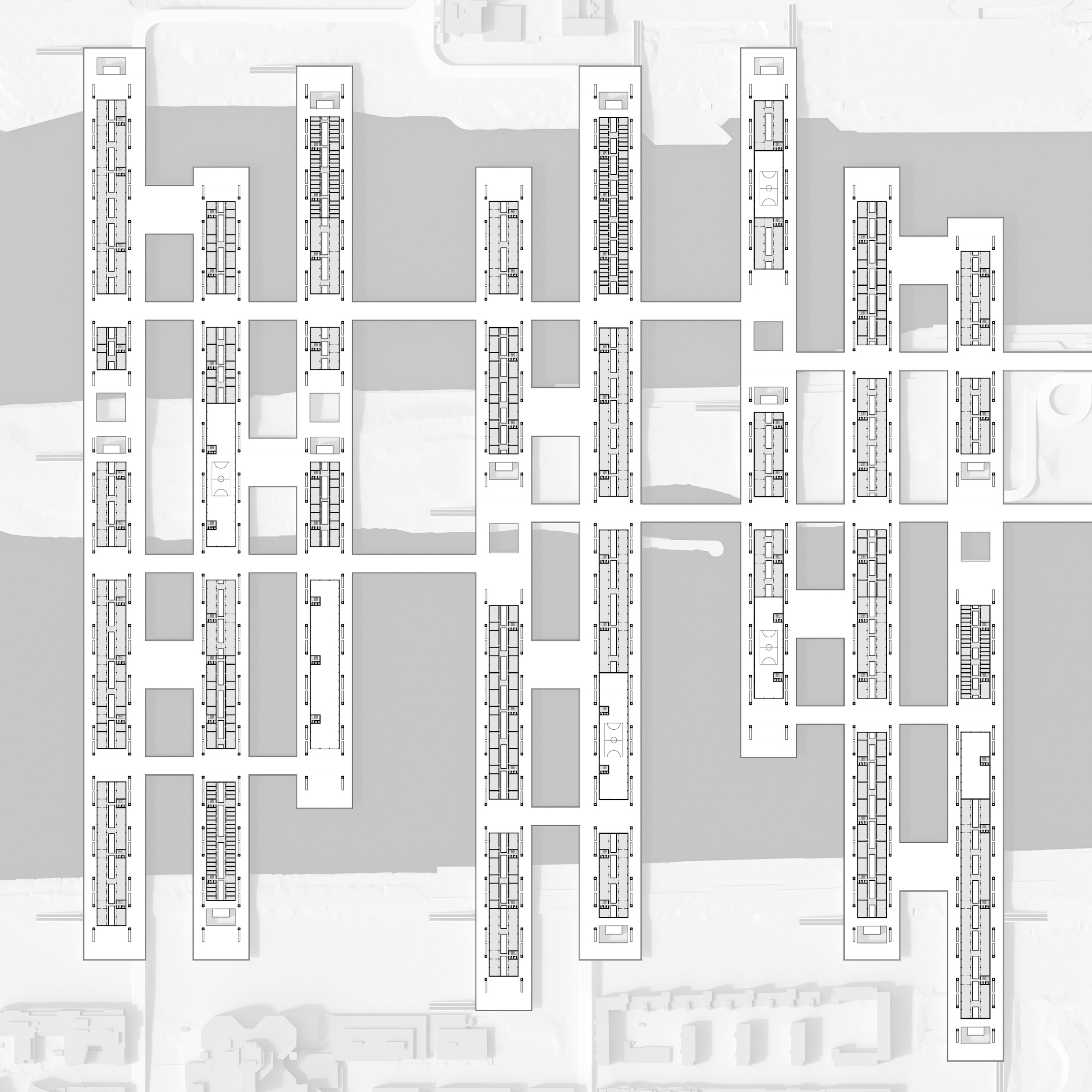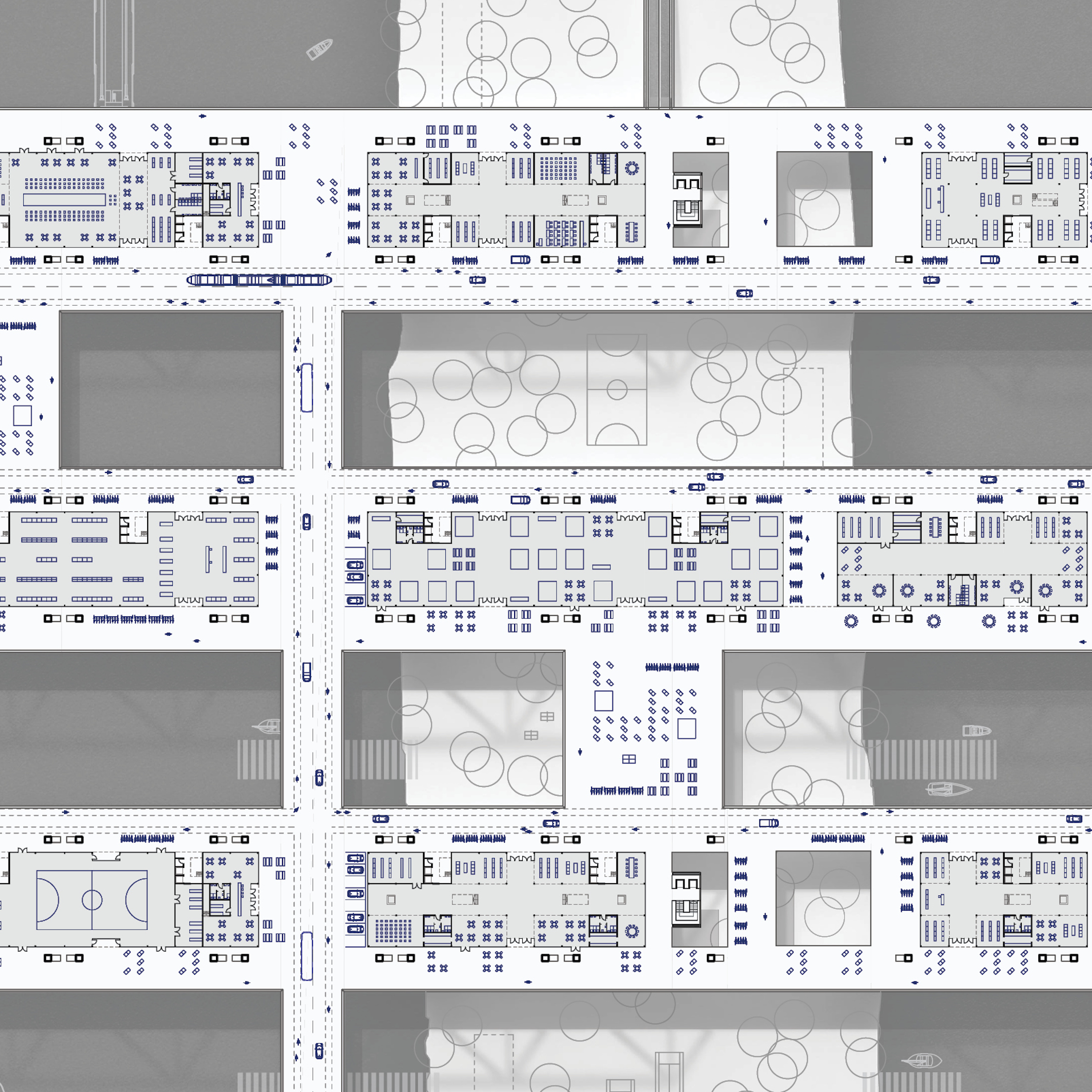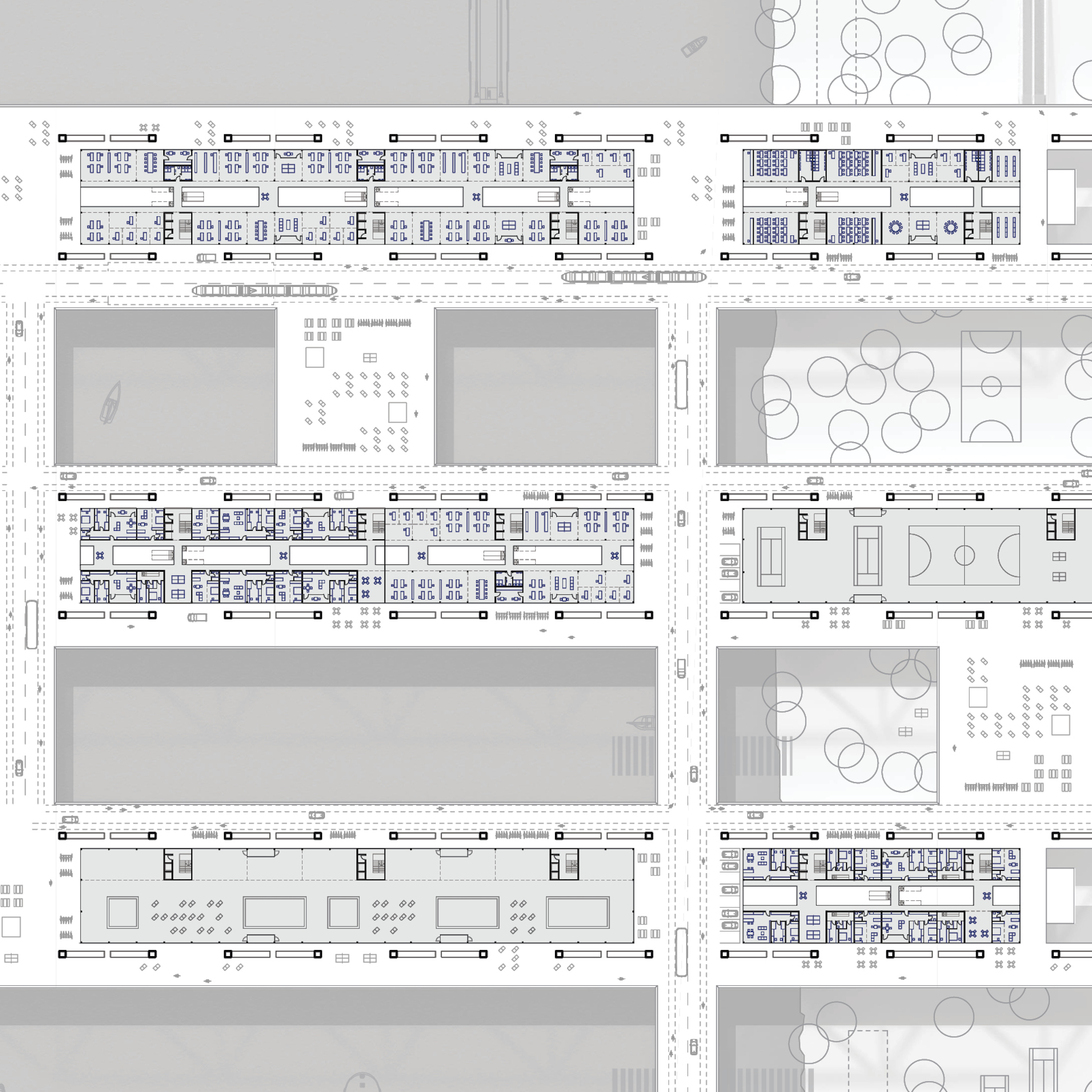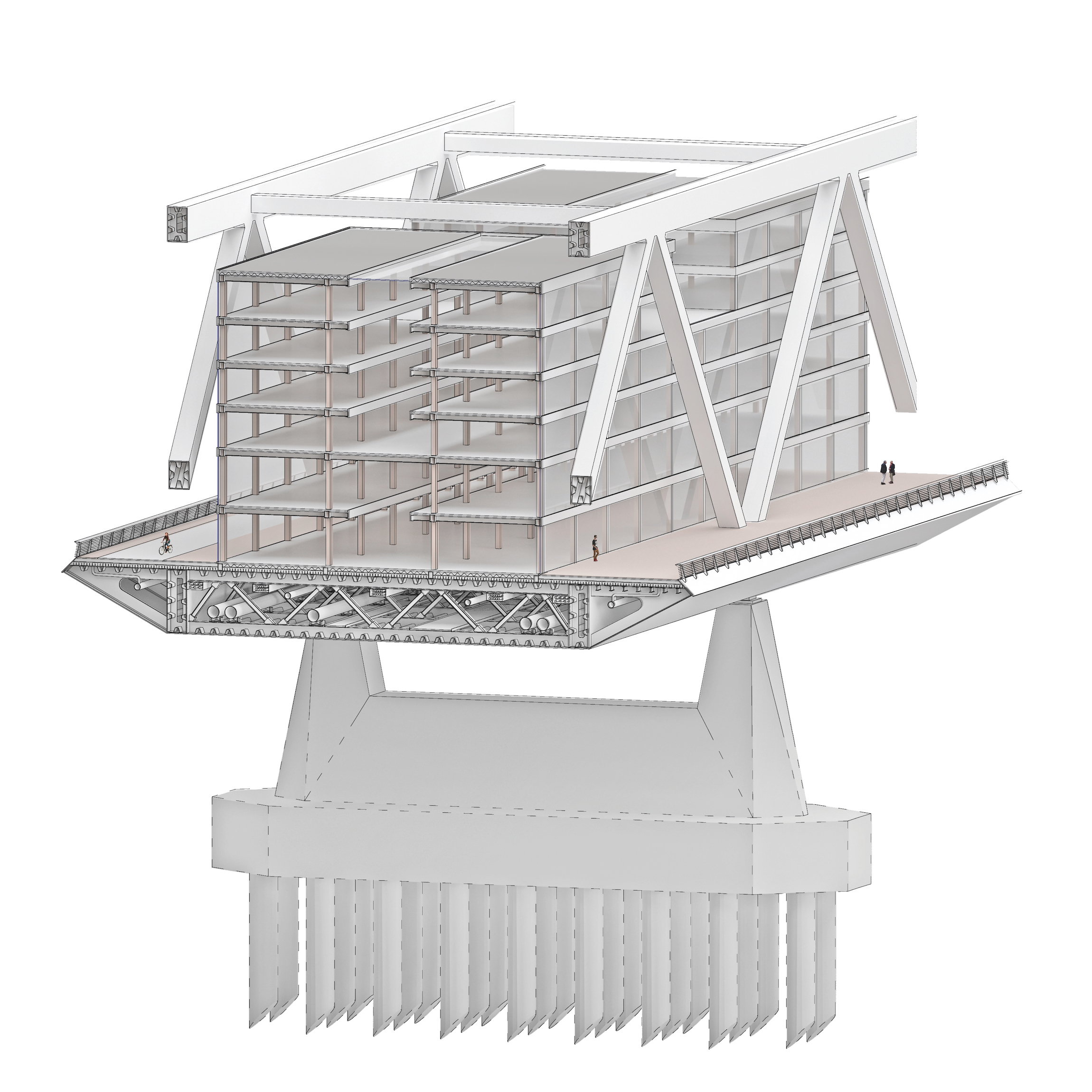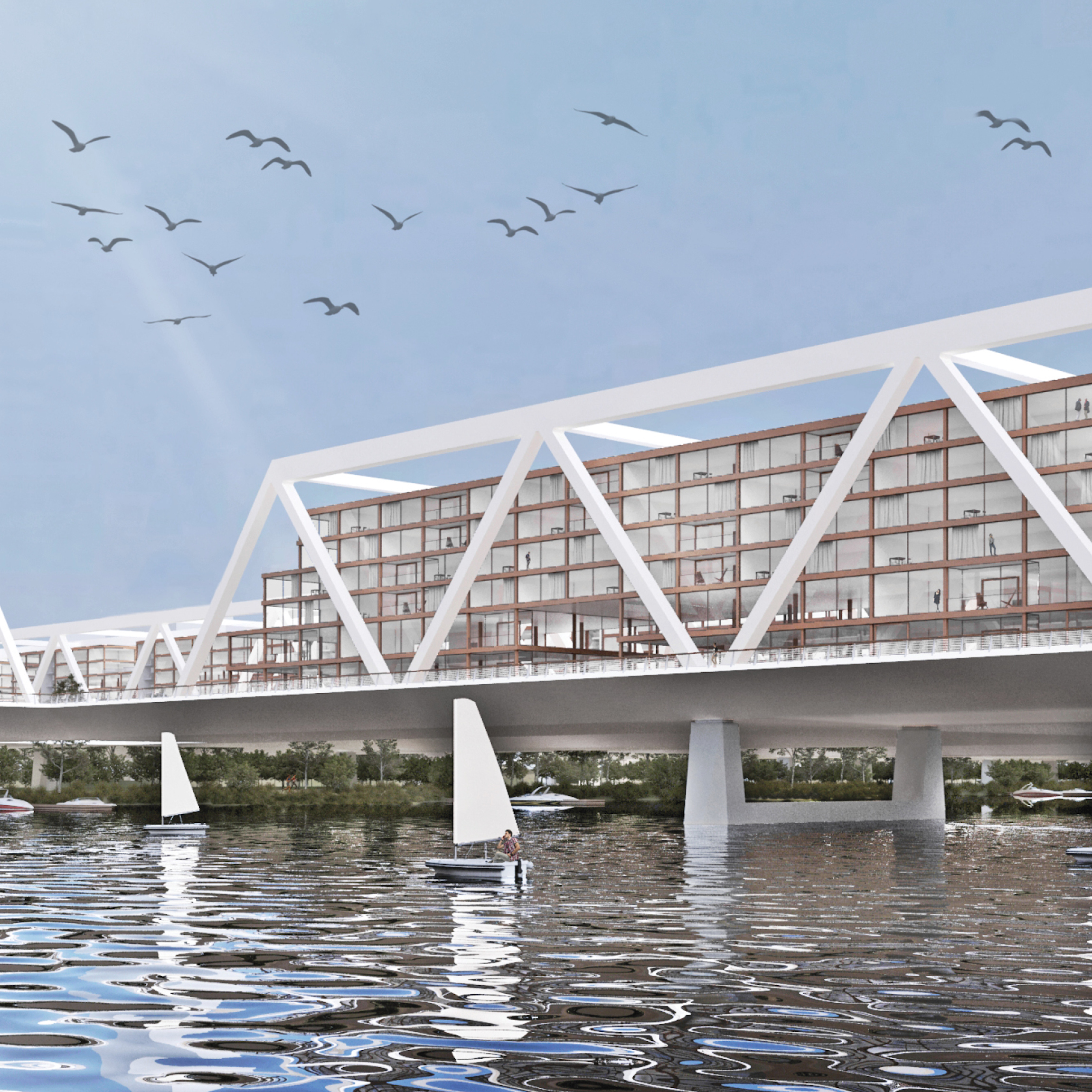Danijel Zorec
Betreuung:
Univ.-Prof. Dipl.-Ing. Roger Riewe
Institut für Architekturtechnologie
2020
Universitätsbibliothek

Vienna is a city constantly growing and striving for supreme living conditions in its urban areas, in order to remain one of the most livable cities in the world. In line with that, the presence of the Danube river plays a huge role in the Viennese living environment. The Danube river with its island is seen as a prestigious and unique urban phenomenon and home to many leisure and recreational activities. However, this wide natural obstacle often still represents a physical as well as a symbolical gap between the two sides of the city. After many centuries of city as well as river transformations, the Danube is still showing tremendous potential for development. This master’s thesis deals with the possible occurrence and actual design process of an urban cluster in the form of multiple inhabitable bridges on a very delicate and exquisite location, namely over the Danube Island and across the river Danube itself in Vienna. The aim of this project is to design a viable and reasonable subtle megastructure which would integrate social and cultural aspects of the river and the city. The proposed design aims to respond positively to the fragile environment and integrate well into the existing urban fabric, as well overcome all the constrains. High living quality based on a human scale should prevail over the excessive aesthetic and seductive monumental effect. At the same time, an inhabitable bridge, a typology invented a long time ago, is once again put to the test in order to create a contemporary and distinctive urban cluster, known as the “Living Bridges of Vienna.”

